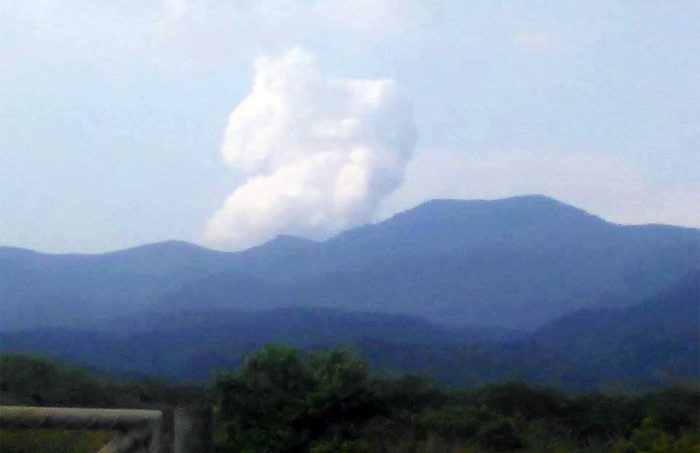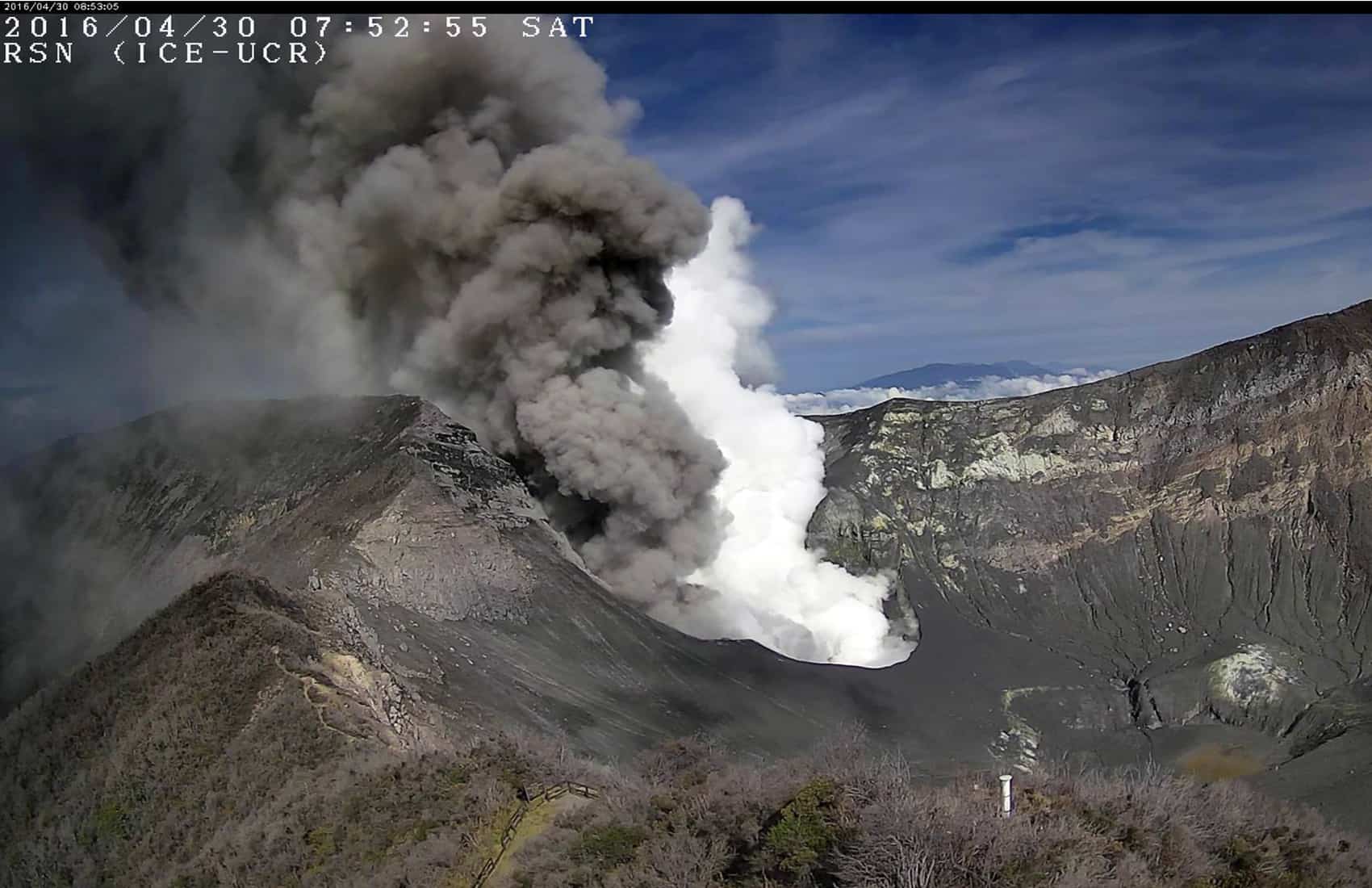Two Costa Rican volcanoes, Turrialba in Cartago province and Rincón de la Vieja in Guanacaste, began to show increased activity over the weekend, according to researchers from the University of Costa Rica (UCR) and the National University.
An explosion of ash and rocks was recorded at Turrialba Volcano at 3 a.m. on Saturday. The dark column of ash was visible next to the white column of vapor and gases that has been rising from the crater over the past few weeks.
The UCR’s National Seismological Network (RSN) reported that seismic activity around the volcano increased following Saturday’s explosion, but mostly with frequent, low-magnitude tremors.
Small explosions have also continued. Between Friday morning and the early hours of Monday, RSN recorded more than 200 explosions, many of them hurling ash and rock out of the crater.
One of these explosions, at around 6 a.m. Monday, reached two kilometers high, RSN reported.
Wind conditions around the volcano have been mild, which has helped keep ash from spreading far from the crater. Most ash has fallen within the perimeter of Turrialba Volcano National Park, which is currently off-limits to visitors.
Public posts on RSN’s Facebook profile indicate that most of the ash found outside of the park has fallen within a 3-kilometer radius around the volcano, in Cartago communities such as Pacayas, Alvarado, La Pastora and central Turrialba. Residents in these areas said the air smelled strongly of sulfur over the weekend.
On Monday afternoon, the National Emergency Commission (CNE) called on the population to remain calm. CNE President Iván Brenes said the increase in the volcano’s activity has caused classes to be suspended at five public schools in Turrialba.
He said officials are monitoring crops for the presence of ash, and checking for possible harm to animals on the numerous dairy farms in the northern part of Turrialba canton.
Access to the national park within a three-kilometer radius has been closed to visitors since 2012, and on Monday, CNE extended the banned area to five kilometers.
But Brenes said tourists can still visit other destinations in Turrialba. The area is popular for its mountain hotels and excellent rafting and kayaking rivers.
Watch one of the ash explosions recorded by an RSN webcam at 7:34 a.m. Sunday
https://www.facebook.com/RSN.CR/videos/1118119261584979/?hc_location=ufi
Rincón de La Vieja Volcano also active
At the northern end of the country, in Guanacaste province, OVSICORI reported a moderate explosion at Rincón de la Vieja Volcano on Sunday at 2:37 p.m.
OVSICORI instruments also recorded an increase in seismic activity for some 11 minutes following the explosion.
Volcanologists ruled out a possible relation between activity at the two volcanoes and noted that Rincón de la Vieja has been active for several months. In March, at least two major explosions were recorded at the Guanacaste volcano, alarming local residents.
One of them, on March 9, left ash on the roofs of homes within a six-kilometer radius around the volcano, mainly in communities north of the crater in Upala and Buenos Aires.
On March 15, another explosion formed a column of vapor and gases that reached more than 700 meters high.







